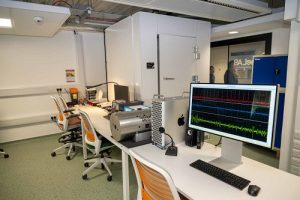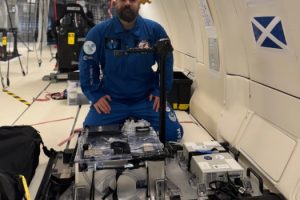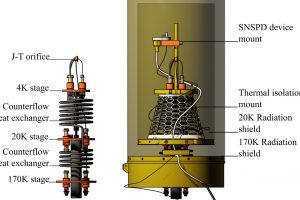
Part of the James Watt School of Engineering, the facility is designed to eliminate magnetic interference from any external sources. For example, nearby electronics and even the Earth’s magnetic field.
And the MuRoom within the lab will enable researchers to detect extremely weak biomagnetic signals. The university anticipates researchers developing new prototypes in this area. For example, detecting signals produced by human muscles (magnetomyography or MMG) and organs such as the heart (magnetocardiography or MCG) and brain (magnetoencephalography or MEG).
Sophisticated shielding

“We’re delighted to officially open the magnetism lab, which is the first facility in Scotland to offer this level of sophisticated shielding to enable advances in biomedical and sensing research”, said Professor Muhammad Imran, Head of the James Watt School of Engineering.
“The lab helps to drive forward the University’s approach to innovation, enabling new developments in medical technology. The lab will foster new partnerships between academia and industry in next-generation medical sensors and transformative technologies, offering new solutions for healthcare, prosthetics, and human-computer interaction.”
Magnetism lab
Professor Hadi Heidari, from the James Watt School of Engineering, led the installation of the laboratory. He is also the Chief Technology Officer (CTO) of Neuranics.
He added:
“The potential applications are incredibly exciting, especially in medical diagnostics. Three-dimensional measurements of magnetic signals could help identify conditions that traditional methods might overlook, such as certain types of ‘silent’ strokes.
“The magnetism lab will help us make MMG sensors sensitive enough for sophisticated measurements of the human body, which could be integrated into everyday life. That might mean a credit card-sized device that monitors your heart for 24 hours or a wristband that allows precise control of prosthetic limbs.”
The magnetism lab will be accessible by both academic researchers and industry partners to advance research. One project using the new facility, for example, is SUPREMISE. This is an EPSRC-funded initiative exploring MMG’s potential applications. It involves researchers from both Glasgow and Edinburgh universities.
Wearable devices
The university highlights that magnetic signals are vector sensitive, which brings advantages for advances for wearable devices:
“Since biological tissues such as skin and subcutaneous fat are transparent to magnetic fields, these signals experience minimal distortion,” it states. “This results in a higher spatial resolution compared to electrical methods.”
“Moreover, while electrical signals are restricted to the plane of skin and do not yield any vectorial information, magnetic signals are vector sensitive. This allows 3D visualisations of signal source which could enhance the control of advanced prosthetic limbs and pave the way for new forms of human-computer interaction through wearable devices.”
The official opening of the magnetism lab was on Monday, 24 February.
Glasgow University
Image: Glasgow University. In the picture are: Professor Muhammad Imran, Uzma Khan, Vice-Principal for Economic Development and Innovation; Professor Chris Pearce, Vice-Principal for Research and Knowledge Exchange; and Eric Yeatman, Head of the College of Science & Engineering.
See also: Glasgow researchers make diamond transistors that switch off by default



